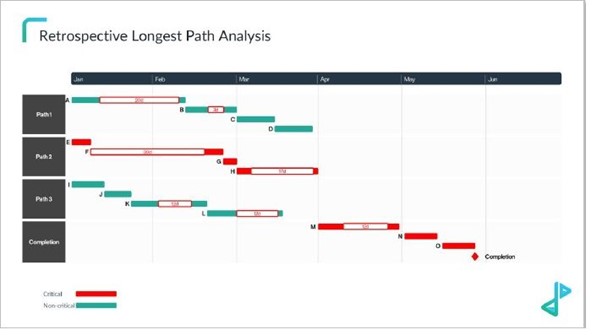In the retrospective longest path analysis approach, the focus lies on determining the critical path as it actually unfolded during the project, distinct from the contemporaneous or actual critical path identified through other methods. This methodology involves several steps to unveil insights into project performance.
Initially, the delay analyst establishes or verifies a detailed as-built program, capturing the project’s actual timeline accurately. Subsequently, tracing back from the project’s completion date, the delay analyst identifies the longest continuous path – the retrospective as-built critical path. This path showcases the sequence of activities that significantly influenced the project’s duration.
Further investigation into project records follows to understand the causes behind identified critical delays. By scrutinising events and circumstances throughout the project’s lifecycle, the analyst gains insights into factors contributing to deviations from the planned timeline.
However, it’s essential to acknowledge a limitation of this method: its relatively constrained ability to accommodate shifts in the critical path during project execution. While effective in pinpointing key delays and their causes, this approach may not fully capture instances where the critical path underwent changes during the project’s progression.
